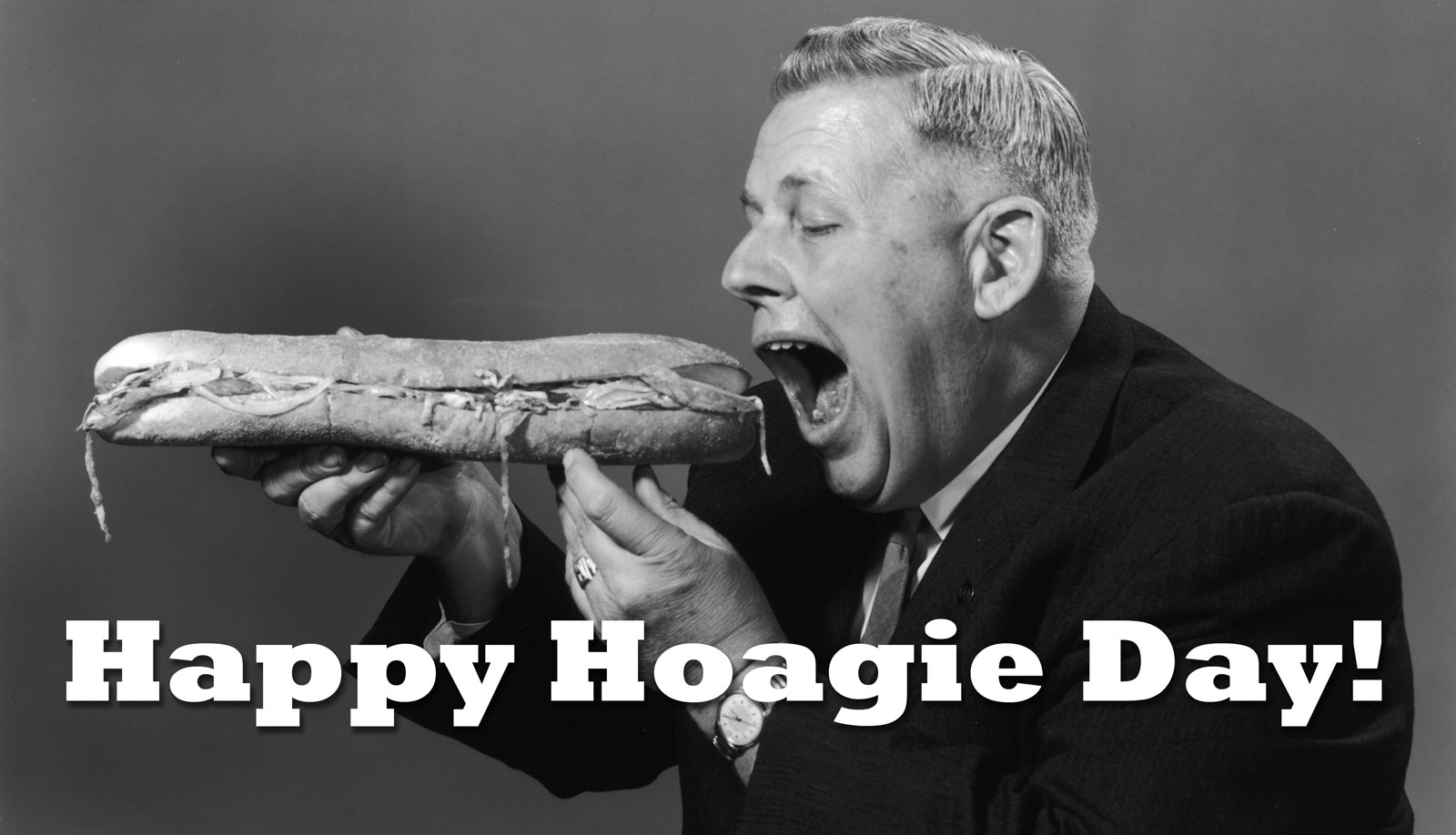Happy Hoagie Day!
It’s almost dinner time here at The Storage Inn Self Storage in Egg Harbor Township New Jersey, so I called John at our local Corner Deli to order something to eat. John informed me that today is National Eat a Hoagie Day, so in a show of support, I ordered hoagies for the rental office staff and yard support crew! (It didn’t hurt that they were half price in honor of this historic day).
For those of you who don’t live in the Philadelphia Tri-State area, a hoagie is similar to what you would probably know as a submarine sandwich or a hero, but today is not eat a hero day, or eat a sub day – it’s eat a Hoagie Day! This made me wonder where the name “Hoagie” came from, so I did a little research and here is what I found.

Seven Possible Origins of the “Hoagie”
The Hog Island Legend.
During World War I, the U.S. government contracted with the American International Shipbuilding company to construct warships on Hog Island on the Delaware River in Philadelphia. Italian immigrants working at the company after World War II became known as “Hog Islanders,” and the massive sandwiches they constructed of lunch meat and cheese inside Italian rolls took on the name as well. This was eventually shortened to “hoggies” and then transformed into “hoagies” thanks to the wonders of the Philadelphia accent.
Hogan’s Hero?
See the above, but substitute an Irish immigrant shipbuilder named Hogan (nickname “Hogie”) who coveted his Italian co-worker’s hearty sandwich and begged him to have his wife make him one, too. His moniker got transferred to the sandwich forever to endure.
The Hokie Hypothesis.
The story goes that Italians in South Philly once used the term “on the hoke” the way we now use “on the dole,” to describe being poor. Sandwiches made by kindly shopkeepers from scraps of meat and cheese and distributed free to the needy, thus became “hokies,” which transmogrified to “ hoagies”.
Put your Right Foot in, Put your Right Foot out.
In the 1880’s Gilbert and Sullivan’s comic opera H.M.S. Pinafore debuted in Philly. Local bakeries marked the occasion by producing a long, thin roll they called a “pinafore.” Sandwiches made on the rolls were sold by street-cart vendors known as “hokey-pokey men.” Thus was born the “hokey,” which gradually was worn down by the Philly accents into the easier-to-say “hoagie.”

The DePalma Possibility.
During the depths of the Great Depression in South Philadelphia, an unemployed musician named Al DePalma went to the shipyards to look for work, and saw employees chomping happily away at meat-and-cheese sandwiches on lovely fresh rolls. “These guys look like hogs,” DePalma tells himself. Instead of applying for work, he opens his own lunch stand, re-creating the hefty sandwiches and calling them “hoggies.” He eventually opened a real, full-scale deli earning the nickname “King of the Hoggies.” And then that “a” somehow crept in.
The Holmesburg Hobo.
According to local historian Jim Smart, who once wrote a column for the Inquirer, the “hoagie” was a corruption of “hobo,” used for a sandwich invented on Ditman Street in the Holmesburg section of the city.
The DiCostanza Claim.
In 1925, the DiCostanza family opened a grocery store which catered to the late-night needs of a den of iniquity known as Palermo’s (some say it was a bar; some say it was a pool hall). One evening a customer entered the store just as Mrs. DiCostanza was frying up some peppers. Enticed by the aroma, the customer implored her to make him a meat-and-cheese sandwich and throw some peppers on. She did, and the rest is… well, history according to the DiCostanza clan, and just one more hoagie theory. This one explains the sandwich, but what about the name?
So who knows which theory is correct? I’m personally going with the Hog Island Legend. One thing that I do know is that the rental office here at The Storage Inn in South Jersey is gonna smell delicious thanks to John and his crew at the Corner Deli. Happy National Hoagie Day – Bon Appetit!


